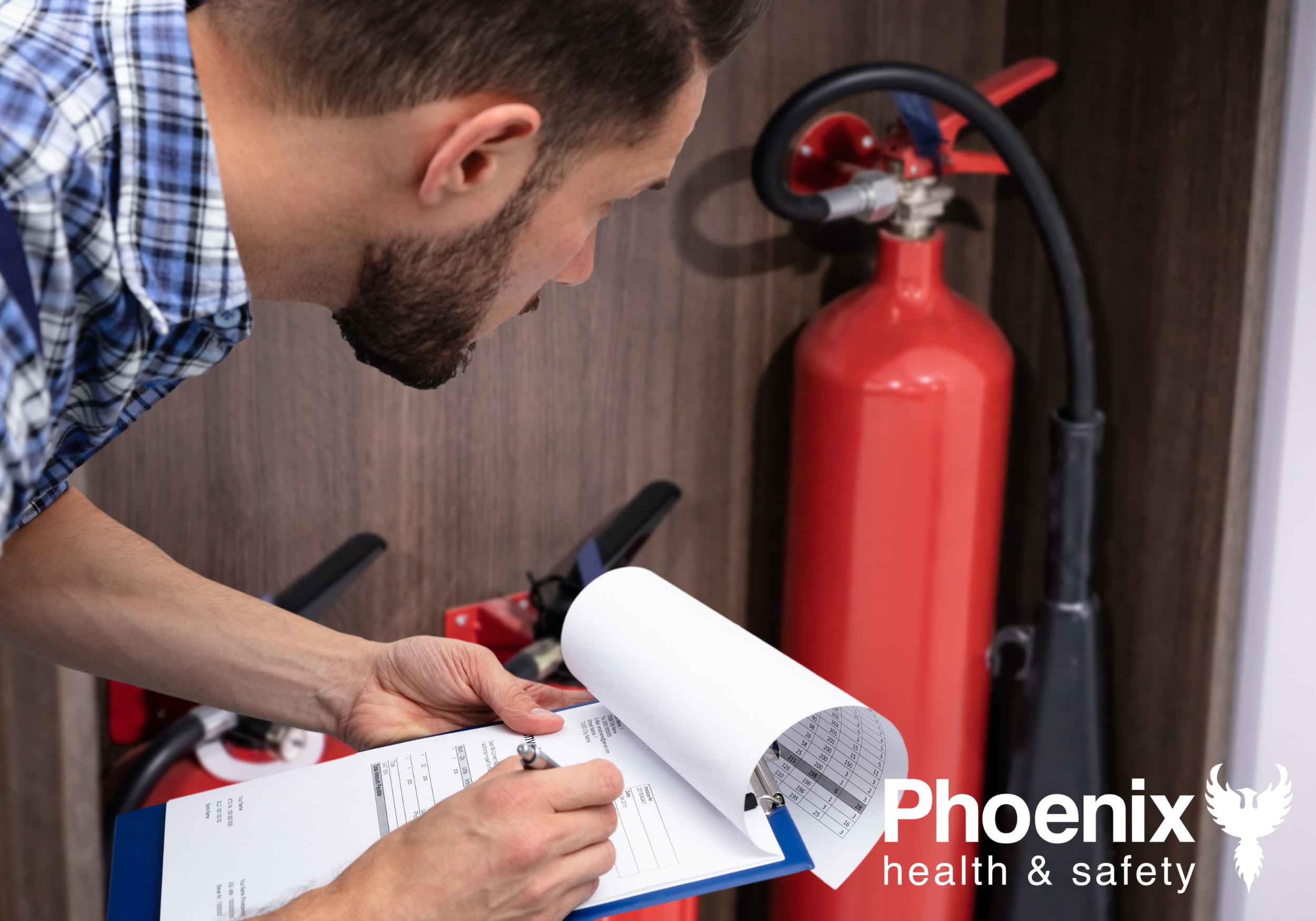10 Workplace Safety Tips Every Manager Should Know

Every year, thousands of workers in the UK are injured at work. In the worst cases, fatalities occur and some workers never get to go home. HSE statistics show that, in 2024/25 alone, 124 employees lost their lives at work. What’s worse, many of these deaths could have been avoided by proper health and safety practices (1).
At Phoenix Health & Safety, we know that safety should always be taken seriously. With NEBOSH, IOSH and ISEP training and qualifications, we support thousands of safety professionals every year. Our consultancy services help organisations of all sizes create positive safety cultures and keep their employees safe.
In this blog, we’ll share ten practical tips, straight from our training team, that you can apply in your workplace. Whether you’re a business owner, manager, or supervisor, there’ll be something here to help you keep your team safe.
1: Conduct Regular Risk Assessments
Hazards evolve as tasks, people, and processes change. Without consistent assessments, hidden risks can grow into serious incidents. For example, a warehouse may adopt a new storage system. If the new layout blocks fire exits, it can pose a serious safety risk.
Best Practice:
By conducting regular risk assessments, workplaces can prevent new risks developing. This doesn’t only mean doing one every few months, but also when new equipment, procedure, or staff are introduced. Doing so can help managers identify problems early and take proactive action.
Phoenix Health and Safety’s IOSH Managing Safely training gives supervisors and managers the skills to assess risks confidently, helping keep themselves and their team safe. The course is available online, in the classroom and virtually, offering maximum flexibility for learners.
2: Consult Employees on Workplace Safety Risks
Employees often see risks first because they deal with them every day. Without their input into safety strategy, these risks can go overlooked until it’s too late. Consider a production line where staff spot a recurring issue with a machine guard malfunctioning. If they don’t feel comfortable raising concerns, an injury could occur when it breaks.
Best Practice:
Managers should actively consult with staff, building a safety-first culture and encourage open communication.
It’s up to organisation leaders to consult with their team about issues such as these, and build a safety culture where staff feel confident raising concerns. By taking our NEBOSH Leadership Excellence course, senior staff can build effective leadership skills and safety knowledge, helping them to support staff across their organisation. The course is only one day long and available online, perfect to fit in and around leader’s packed schedules.
3: Keep the Site Tidy
A messy workplace is often one with more safety risks. Whether it be:
Crates from a new stock shipment blocking a fire exit
Trailing cables or wires left in the middle of the office floor
Overflowing bins that are beginning to smell
Shelves stacked so high a single tap will knock them over
By the same logic, a tidy site is usually a safe site. Not only does clutter reduce the chance of risks being spotted, it’s also the source of flips, trips and falls, which are among the most common workplace injuries.
Best Practice:
That's why it's key to have cleaning procedures outlined in your organisation's safety strategy. Even if it's as simple as an end of day tidy, keeping the workplace clean can be what prevents a serious accident. Include cleaning procedure and schedule in your health and safety strategy to ensure it’s not missed.
4: Test Equipment Regularly
Many workplaces require the use of dangerous equipment. While it’s usually reliable and has plenty of mechanisms to keep users safe, it’s no guarantee of safety. After all, it only takes one malfunction to cause an injury. Whether it's a power drill, forklift truck or laser cutter, there are countless pieces of equipment that could cause serious injury.
Best Practice:
Your organisation should be checking equipment regularly, ensuring everything is working as intended. Written records should be kept so you know when maintenance is done and next due, with trained staff or professionals completing inspections in safe environments. As one of the leading causes of workplace accidents, all it takes is a single incident or oversight for injury to occur.
5: Provide Effective Workplace Training to Employees
While Health and Safety can often seem like a tick box exercise- every staff member needs training in some form or another. There are extreme examples, like laboratories or factories making use of hazardous substances, where staff would need to know which PPE to use and how. But even in an office, without display screen equipment training, workers can develop musculoskeletal issues and suffer both in and outside of work.
Best Practice:
Ensuring all staff have the training they need is the duty of employers and an easy way to keep them safe. Short training courses like those available with Phoenix can be studied in under an hour, online and anytime. Whether it’s manual handling, working at height or health and safety awareness, we have a course for your team.
6: Carry Out Fire Drills
Fires are a risk in every workplace, whether it be from an overflowing recycling bin or manufacturing with a flammable substance, the result can be a disaster. On average, a single major fire leads to financial costs of over £600,000 (2).
Best Practice:
Having effective emergency evacuation plans in place is a must for every organisation, but what many overlook are fire drills. You can have the perfect evacuation plan, but if staff waste time going to the wrong exit, it can lose them the little time they have in face of a fire. Organisations should carry out routine fire drills so that everyone knows what to do in case of an emergency.
What’s equally important is having someone to oversee the drills and design evacuation procedures. The NEBOSH Certificate in Fire Safety provides technical fire safety knowledge for managers and supervisors, covering prevention, emergency planning, and effective evacuation procedures. It’s ideal for your organisation’s fire marshal or warden, and gives them the skills they need to keep their colleagues safe and reduce fire risk.

7: Be Mindful of Mental Health
Keeping staff safe also means protecting their mental health. Stress, fatigue, and burnout can lead to a higher risk of mistakes and impact decision making. Take a call centre where high workloads and strict deadlines are the standard. Without support, staff performance suffers and turnover rises. As does the chance of misaddressed emails and other mistakes which can easily add up.
Best Practice:
Organisations that promote wellbeing and train managers to recognise early signs of stress build healthier, safer teams. Their staff are also more positive, productive, and less likely to leave, meaning more profits for everyone. Our new IOSH Managing Occupational Health and Wellbeing course gives managers the skills and awareness to support their team’s wellbeing at work. It covers the hazards that can put employee’s health at risk, as well as how to carry out health needs assessments.
8: Keep Your First Aid Kit Stocked
Even with perfect safety procedures, there’s always a small risk of incident and injury.
Best Practice:
Organisations should keep their first aid kit fully stocked and accessible. Doing so means injuries get treated quickly, reducing the risk of infections and further injury.
When the first aid kit is used, restocking it should always be a priority, as you never know when it will next be needed. It’s also important to have several staff with first aid training. If your one first aider is injured and no one else is able to support them, it can spell disaster.
9: Maintain Written Records
Documentation is not just about compliance. Records improve long-term safety performance by highlighting trends and areas for improvement. Whether it be a particular team or area of the site with higher accident rates, having records lets your organisation react and improve safety procedures. It also demonstrates your commitment to safety to stakeholders, and provides a key document for use in investigations, should a major incident occur.
Best Practice:
Organisations should maintain written copies of all their health and safety documents, including:
Safe systems of work
Health and Safety policy and strategy
Risk assessments
Incidents logs
Incident investigations
Equipment checks and maintenance
Emergency procedures
Doing so allows you to build on previous practices and improve your organisation’s safety, instead of repeating the same errors and injuries.
10: Make Workplace Safety a Priority
As we mentioned earlier, safety shouldn’t be a tick box exercise. It’s important to always be prioritising health and safety in an organisation, and that goes for every member of the team. If every person in an organisation is looking out for hazards, signs of stress in their colleagues, and thinking of ways to improve practices, it will benefit the health and wellbeing of everyone.
Best Practice:
You can achieve this in your organisation by building a strong health and safety culture, investing in training, and making sure employees' views feel valued and heard.
That was our 10 tips for improving safety practices in your workplace. By following them, you can build a safe environment for every member of your team.
Health and safety can seem overwhelming, and that’s why sharing responsibilities and having dedicated safety staff is key. Training multiple managers on risk assessment, having a fire warden, teaching staff how to work safely- all of these things contribute to a culture which values safety and wellbeing.
If you want to give your staff the safety skills they need, speak to a member of our team. Or browse our NEBOSH, IOSH and ISEP courses to see how our training can help you and your team.
FAQs
What are the most common workplace safety hazards in the UK?
The most common workplace safety hazards include working at height, improper display screen equipment use. manual handling, as well as slips and trips. Preventing these hazards from causing injury should be a priority for every workplace.
Why are regular risk assessments important?
Carrying out regular risk assessments helps organisations to identify and control risks before they cause incident or injury. By conducting them regularly, they can catch any new risks introduced by new equipment or changes to the work environment.
What safety training should managers complete?
Managers should study a course which covers the fundamentals of health and safety, as well as how to look after the safety and wellbeing of their team. We have two available options at Phoenix, the IOSH Managing Safely course, which focuses on safety fundamentals and risk assessments. As well as the IOSH Managing Occupational Safety and Wellbeing course, which covers employee wellbeing and health needs assessments.